Healthy Snack Hacks: Nutritious and Delicious Treats for Preschoolers
Snack time is an essential part of a preschooler’s day, providing them with the energy and nutrients they need to stay focused, engaged, and happy. However, finding nutritious and appealing snacks that preschoolers will enjoy can sometimes be a challenge.
In this blog post, we’ll share some healthy snack hacks and creative ideas to ensure that snack time is both nutritious and delicious for your little ones.
Healthy Snack Hacks: Nutritious and Delicious Treats for Preschoolers
1. Fruit and Veggie Kabobs
- Make snack time fun and colorful by creating fruit and veggie kabobs. Thread bite-sized pieces of fruits like strawberries, grapes, pineapple, and melon, along with veggies like cherry tomatoes, cucumber slices, and bell pepper strips onto skewers. Serve with a side of yogurt or hummus for dipping.
2. Homemade Trail Mix
- Mix together a variety of nutritious ingredients to create your own custom trail mix. Combine whole-grain cereal, nuts, seeds, dried fruits, and a sprinkle of dark chocolate chips for a tasty and satisfying snack that’s packed with fiber, protein, and healthy fats.

3. Veggie Quesadillas
- Spread a thin layer of hummus or mashed avocado onto a whole-grain tortilla, then add thinly sliced veggies like bell peppers, cucumbers, carrots, and spinach. Top with shredded cheese and fold the tortilla in half. Warm in a skillet until the cheese is melted, then slice into wedges for a nutritious and kid-friendly snack.
4. Apple Sandwiches
- Create apple sandwiches by slicing apples horizontally into rounds and removing the core. Spread peanut butter or almond butter onto one apple slice, then sprinkle with granola, raisins, and a drizzle of honey. Top with another apple slice to create a delicious and wholesome sandwich.
5. Yogurt Parfaits
- Layer yogurt with fresh fruit and granola to create colorful and nutritious parfaits. Let your preschooler assemble their own parfait by offering a variety of fruits, such as berries, bananas, and kiwi, along with crunchy granola or whole-grain cereal for added texture.
6. Mini Pita Pizzas
- Spread tomato sauce onto mini whole-grain pitas, then top with shredded cheese and colorful veggies like bell peppers, mushrooms, and olives. Bake in the oven until the cheese is bubbly and golden for a tasty and nutritious twist on traditional pizza.
7. Veggie Muffins
- Sneak extra veggies into your preschooler’s diet by baking savory veggie muffins. Mix shredded zucchini, carrots, spinach, or sweet potatoes into a basic muffin batter, then bake until golden and fluffy. These muffins make a nutritious and portable snack that’s perfect for on-the-go.
8. Frozen Yogurt Bites
- Fill mini muffin cups with Greek yogurt and top with fresh fruit, such as berries or mango chunks. Freeze until firm for a refreshing and nutritious snack that’s perfect for hot summer days.
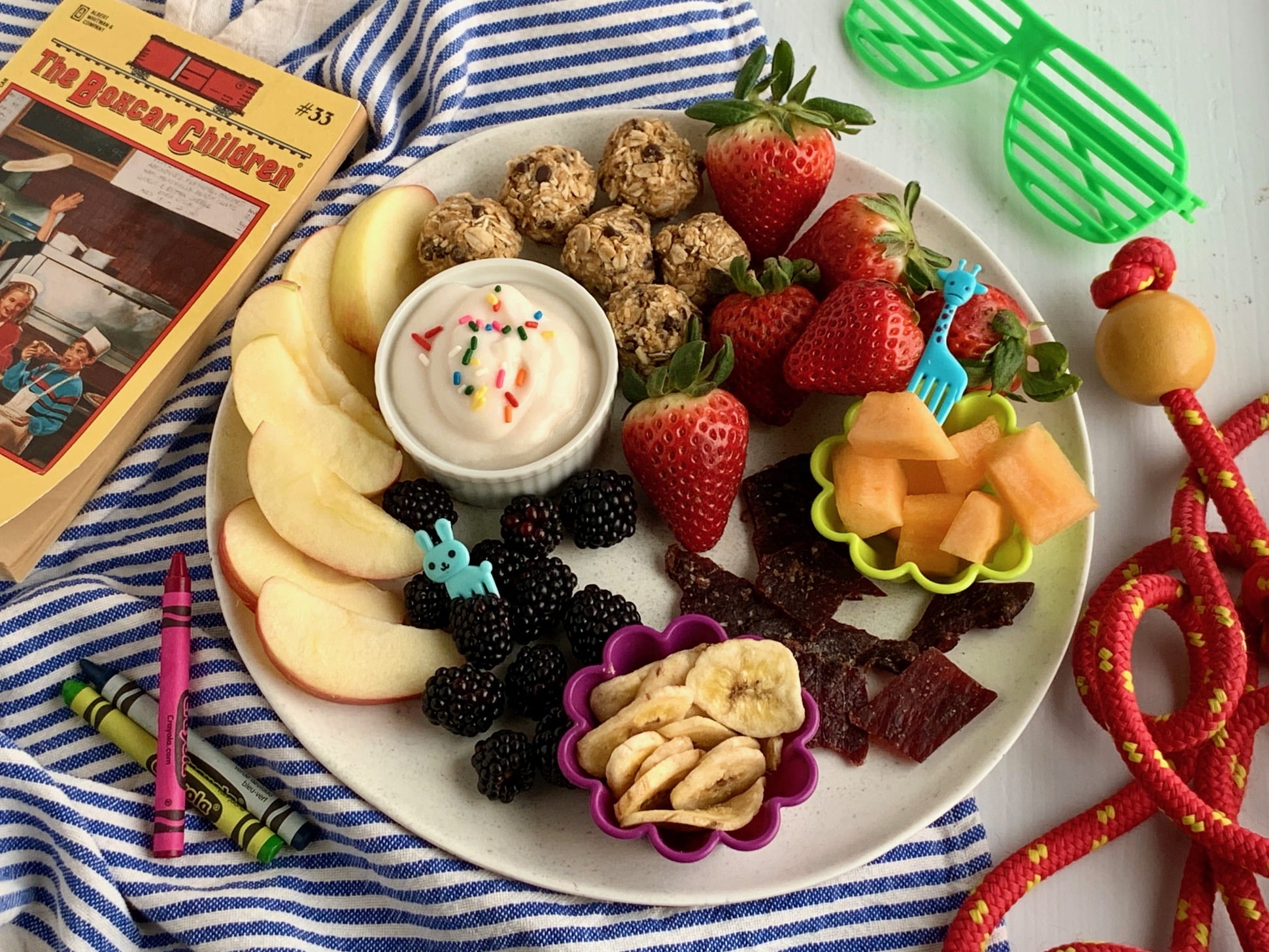
9. Ants on a Log
- Spread peanut butter or cream cheese onto celery sticks, then top with raisins or dried cranberries to create “ants on a log.” This classic snack is not only fun to eat but also provides a good source of protein, fiber, and vitamins.
10. DIY Smoothie Popsicles
- Blend together yogurt, milk, and your child’s favorite fruits to create a smoothie mixture. Pour the mixture into popsicle molds and insert popsicle sticks. Freeze until firm for a cool and refreshing treat that’s both nutritious and delicious.
With these healthy snack hacks and creative ideas, you can make snack time both nutritious and enjoyable for your preschooler. By offering a variety of colorful and wholesome snacks, you’ll help support their growth, development, and overall well-being.
So get creative in the kitchen and let your preschooler explore new flavors and textures while nourishing their bodies with delicious and nutritious treats.
Early Learning Advantages: How Childcare Centers Foster Cognitive Development
In the early years of a child’s life, cognitive development lays the foundation for future learning and academic success. Childcare centers play a pivotal role in providing an enriching environment where young children can engage in stimulating activities, interact with peers, and receive guidance from trained educators.
In this blog post, we’ll explore the advantages of early learning in childcare centers and how they contribute to cognitive development in young children.
Understanding Cognitive Development
Cognitive development refers to the process of acquiring knowledge, understanding, and problem-solving abilities. It encompasses various domains, including language development, memory, attention, reasoning, and executive function skills. During the early years, the brain undergoes rapid growth and development, making it an optimal time for learning and skill acquisition.

The Role of Childcare Centers in Cognitive Development
- Structured Learning Environment
- Childcare centers provide a structured learning environment where children engage in age-appropriate activities designed to stimulate cognitive development. Through play-based learning, hands-on experiences, and guided instruction, children explore new concepts, develop critical thinking skills, and expand their knowledge base.
- Exposure to Rich Learning Materials
- Childcare centers offer a wide range of educational materials, including books, puzzles, manipulatives, and sensory materials. These resources provide opportunities for exploration, discovery, and hands-on learning, promoting cognitive growth and problem-solving abilities.
- Language and Literacy Development
- Childcare centers prioritize language and literacy development through storytelling, conversations, and exposure to print-rich environments. Through exposure to vocabulary, phonics, and early literacy skills, children lay the foundation for reading and writing success.
- Social Interaction and Peer Learning
- Interacting with peers in childcare centers promotes cognitive development through social learning experiences. Children engage in collaborative activities, share ideas, and learn from one another, fostering language development, perspective-taking, and problem-solving skills.
- Guidance from Educators
- Trained childcare professionals play a crucial role in supporting cognitive development through guided instruction, scaffolding, and modeling. They provide opportunities for exploration, ask open-ended questions, and encourage children to think critically and creatively.
- Cognitive Challenges and Problem-Solving
- Childcare centers offer activities that challenge children to think critically, solve problems, and make decisions independently. Whether it’s completing puzzles, sorting objects, or engaging in STEM activities, children develop cognitive skills such as reasoning, logic, and spatial awareness.
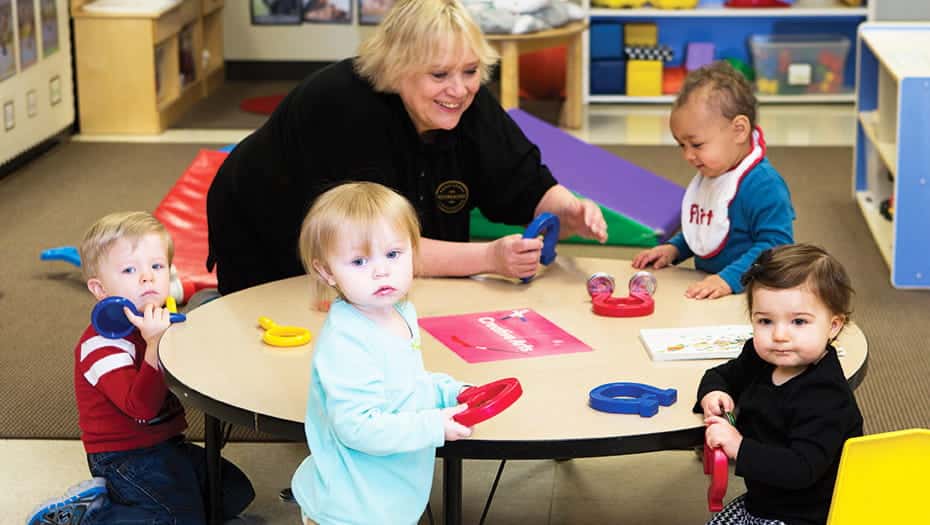
Strategies for Fostering Cognitive Development in Childcare Centers
- Create a Stimulating Environment
- Provide a variety of learning materials and activities that encourage exploration, experimentation, and discovery.
- Encourage Curiosity and Inquiry
- Foster a culture of curiosity by encouraging children to ask questions, seek answers, and explore their interests.
- Promote Language and Literacy
- Incorporate language-rich activities such as storytelling, rhyming games, and alphabet recognition to support language and literacy development.
- Offer Scaffolding and Support
- Provide guidance and support to children as they engage in challenging tasks, offering assistance and encouragement when needed.
- Embrace Diversity and Inclusion
- Celebrate diversity and incorporate multicultural perspectives into learning activities, promoting acceptance and understanding of different cultures and backgrounds.
- Provide Opportunities for Reflection
- Encourage children to reflect on their learning experiences, discuss their thoughts and ideas with peers, and make connections to real-world situations.
Childcare centers play a crucial role in fostering cognitive development in young children, providing a stimulating environment where they can learn, grow, and thrive. Through structured learning activities, exposure to rich learning materials, social interaction, and guidance from trained educators, children build essential cognitive skills that lay the foundation for future academic success. By prioritizing cognitive development and implementing evidence-based practices, childcare centers empower children to become curious, confident, and capable learners, setting them on a path towards lifelong learning and achievement.
Nurturing Social-Emotional Growth: Key Steps in Young Children’s Development
Social-emotional development forms the cornerstone of a child’s overall well-being, influencing their ability to form relationships, regulate emotions, and navigate the complexities of the world around them.
Understanding the healthy steps of social-emotional development in young children is essential for parents and caregivers to provide the support and guidance needed to foster positive growth.
In this blog post, we’ll explore the critical stages of social-emotional development in young children and discuss how caregivers can nurture these vital skills.
Nurturing Social-Emotional Growth: Key Steps in Young Children’s Development
1. Bonding and Attachment (0-12 months)
- Establishing Trust: Infants form secure attachments with caregivers, laying the foundation for trust and emotional security.
2. Exploration and Curiosity (12-24 months)
- Sense of Autonomy: Toddlers begin to assert their independence and explore their surroundings with curiosity.
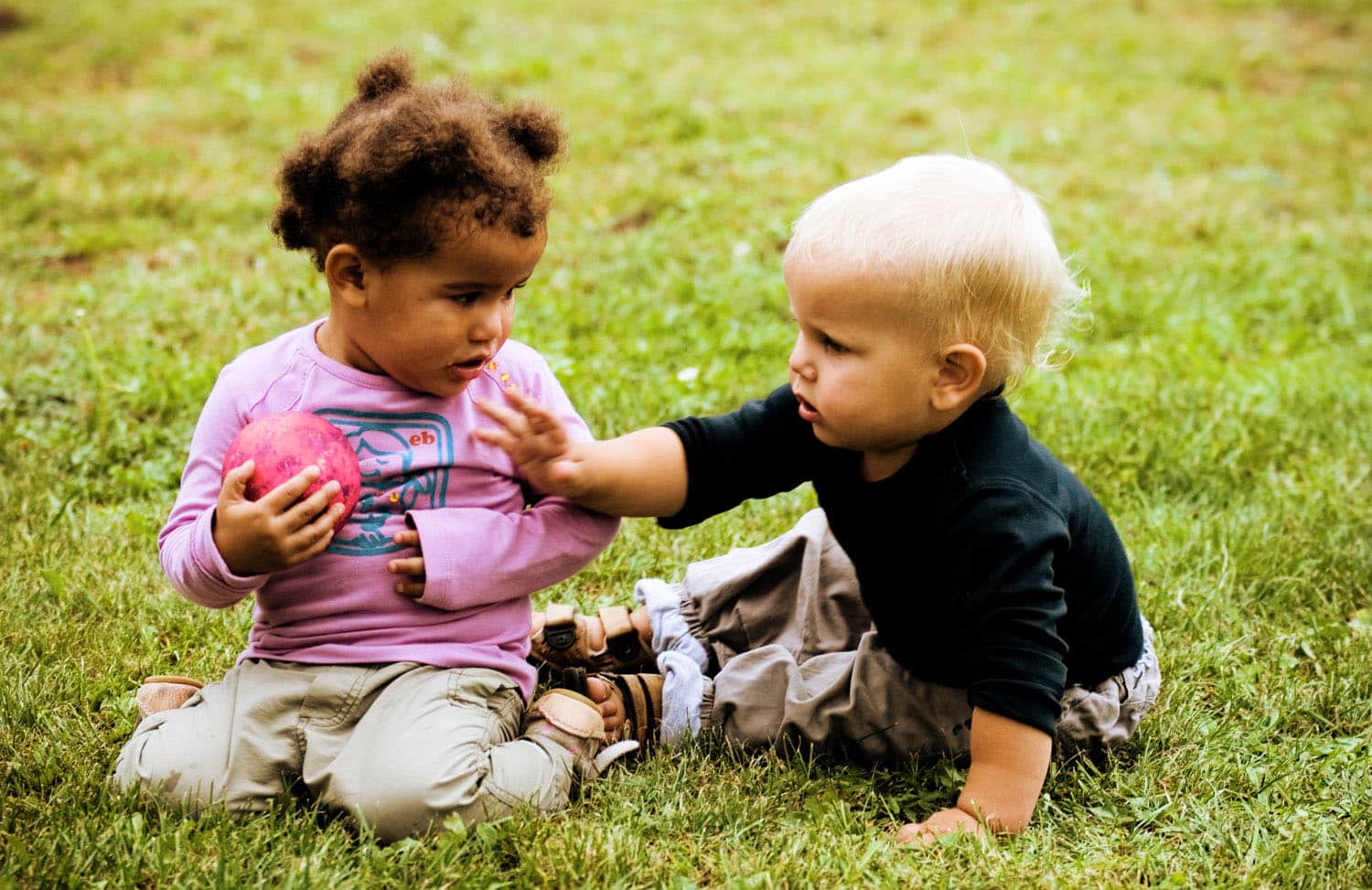
3. Self-Identity and Confidence (2-3 years)
- Developing Self-Awareness: Preschoolers gain a sense of self-identity and begin to express preferences, likes, and dislikes.
4. Empathy and Compassion (3-5 years)
- Understanding Others: Children develop empathy and begin to recognize and respond to the emotions of others.
5. Social Skills and Peer Interaction (5-7 years)
- Building Relationships: School-age children refine social skills, form friendships, and learn to navigate peer interactions.
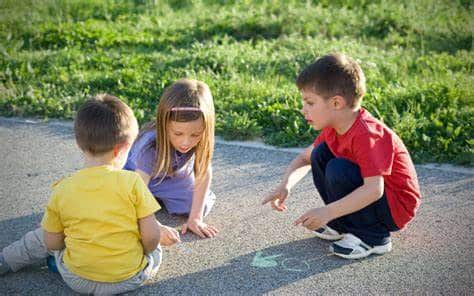
6. Emotional Regulation (7-9 years)
- Managing Emotions: Children develop strategies to regulate their emotions and cope with stress and frustration.
7. Conflict Resolution (9-12 years)
- Problem-Solving Skills: Pre-adolescents learn to resolve conflicts, negotiate, and communicate effectively with others.
8. Empathy and Perspective-Taking (12-14 years)
- Understanding Complex Emotions: Teens deepen their empathy and perspective-taking skills, recognizing the feelings and experiences of others.

9. Identity Formation (14-18 years)
- Exploring Self-Identity: Adolescents navigate the process of identity formation, exploring their values, beliefs, and personal identity.
10. Peer Relationships and Social Dynamics (18+ years)
- Navigating Social Settings: Young adults establish and maintain meaningful relationships, navigate social dynamics, and develop a sense of belonging.

11. Emotional Resilience (Adulthood)
- Coping with Challenges: Adults cultivate emotional resilience, adapting to life’s challenges and setbacks with resilience and perseverance.
12. Empathy and Compassionate Leadership (Adulthood)
- Leading with Empathy: Adults demonstrate empathy and compassion in their interactions, fostering supportive and inclusive environments.
13. Maintaining Healthy Relationships (Adulthood)
- Nurturing Connections: Adults prioritize communication, mutual respect, and trust in maintaining healthy relationships with partners, family, and friends.
14. Self-Reflection and Personal Growth (Adulthood)
- Continual Learning: Adults engage in self-reflection, seeking opportunities for personal growth, and self-improvement.
15. Contributing to the Community (Adulthood)
- Social Responsibility: Adults contribute positively to their communities, advocating for social justice, and supporting those in need.
Understanding the healthy steps of social-emotional development in young children is essential for parents and caregivers to provide the support and guidance needed to nurture these vital skills.
By fostering trust, empathy, resilience, and positive relationships, caregivers lay the foundation for children to thrive emotionally, socially, and academically.
As children progress through each stage of development, caregivers play a crucial role in promoting a positive and nurturing environment that supports their social-emotional growth and well-being.
Nurturing Emotional Intelligence: 10 Ways Parents Can Help Children Express Their Feelings
Encouraging children to express their feelings is a vital aspect of fostering emotional intelligence. As parents, providing a supportive and understanding environment empowers your children to navigate their emotions with confidence.
In this blog post, we’ll explore ten effective ways parents can help their children learn to express and communicate their feelings in healthy and constructive ways.
Nurturing Emotional Intelligence: 10 Ways Parents Can Help Children Express Their Feelings
1. Lead by Example:
- Express Your Own Emotions: Demonstrate openness about your own feelings. Share your emotions and discuss how you manage them, serving as a positive example for your children.
- Why It Works: Modeling healthy emotional expression sets the tone for open communication within the family.
2. Create a Judgment-Free Zone:
- Encourage Honest Communication: Let your children know that it’s okay to express any emotion without fear of judgment. Create a safe space where they feel comfortable sharing their feelings.
- Why It Works: A non-judgmental environment fosters trust and encourages open communication about emotions.
3. Use Age-Appropriate Language:
- Tailor Communication to Their Level: Choose words and concepts that match your child’s age and understanding. This ensures that they can articulate their feelings effectively.
- Why It Works: Using age-appropriate language helps children feel heard and understood.

4. Ask Open-Ended Questions:
- Encourage Reflection: Instead of closed-ended questions, ask open-ended ones to prompt deeper reflection. For example, ask, “How did that make you feel?” instead of “Are you okay?”
- Why It Works: Open-ended questions encourage thoughtful responses and enhance emotional expression.
5. Introduce Feeling Words:
- Expand Their Emotional Vocabulary: Teach your children a variety of feeling words. This broadens their emotional vocabulary, making it easier for them to articulate specific emotions.
- Why It Works: A rich emotional vocabulary enables children to express their feelings with greater precision.
6. Validate Their Emotions:
- Acknowledge and Validate: When your child expresses an emotion, acknowledge it and validate their feelings. For example, say, “I understand that you’re feeling frustrated.”
- Why It Works: Validation helps children feel understood and supported in their emotional experiences.
7. Use Creative Outlets:
- Encourage Artistic Expression: Provide opportunities for artistic expression, such as drawing, painting, or storytelling. These creative outlets allow children to externalize their emotions.
- Why It Works: Artistic expression can be a therapeutic and non-verbal way for children to convey complex feelings.

8. Establish Routine Check-Ins:
- Regularly Discuss Feelings: Incorporate routine check-ins where you discuss feelings. This can be during family meetings or casual conversations.
- Why It Works: Regular check-ins create an ongoing dialogue about emotions, making it a natural part of family communication.
9. Teach Problem-Solving Skills:
- Encourage Solution-Oriented Thinking: Guide your children in problem-solving when they encounter challenging emotions. Help them explore constructive ways to address their feelings.
- Why It Works: Problem-solving skills empower children to take a proactive approach to managing their emotions.
10. Celebrate Emotional Intelligence:
- Recognize Growth: Celebrate instances where your child effectively expresses and manages their emotions. Acknowledge their emotional growth and resilience.
- Why It Works: Positive reinforcement reinforces the importance of emotional intelligence and encourages continued efforts in expressing feelings.
Nurturing your child’s ability to express their feelings is an ongoing journey that contributes to their emotional well-being and interpersonal skills. By implementing these ten strategies, parents can create a foundation for healthy emotional expression, promoting a deeper understanding of self and others.
Remember, each child is unique, so adapt these approaches to suit your child’s individual needs and preferences. With patience, empathy, and a commitment to open communication, you’ll be fostering emotional intelligence that serves your child well throughout their life.
Unveiling the Marvels of Early Development: Milestones for Children Ages 0-2
The first two years of a child’s life are a whirlwind of growth, exploration, and discovery.
From the first moments of gazing into their parent’s eyes to taking those tentative first steps, the developmental milestones achieved during this period are not only awe-inspiring but also crucial indicators of a child’s overall well-being.
In this blog post, we will explore the remarkable journey of developmental milestones for children aged 0-2, providing insights for parents, caregivers, and educators into the incredible transformations taking place during this formative period.
Unveiling the Marvels of Early Development: Milestones for Children Ages 0-2
Motor Skills: Navigating the World One Movement at a Time
- 0-3 months: Infants begin to gain control over their neck muscles, enabling them to lift their heads briefly while lying on their stomachs.
- 4-6 months: The development of hand-eye coordination progresses, with infants reaching for and grasping objects within their reach.
- 7-12 months: The magic of crawling begins, as infants explore their surroundings by maneuvering on their hands and knees.
Cognitive Development: Building the Foundation for Learning
- 0-3 months: Babies start to recognize familiar faces and objects, responding to visual and auditory stimuli.
- 4-6 months: The concept of object permanence emerges, as infants understand that an object continues to exist even when it’s out of sight.
- 7-12 months: Simple problem-solving skills begin to develop, as infants explore cause-and-effect relationships through play.

- 0-3 months: Infants engage in cooing and babbling, expressing themselves through a range of sounds.
- 4-6 months: The exploration of different vocal tones continues, with infants responding to their caregivers’ voices.
- 7-12 months: The first recognizable words may emerge, as infants attempt to communicate simple needs and desires.
Social and Emotional Development: Nurturing Bonds and Expressing Emotions
- 0-3 months: Infants develop attachments to their primary caregivers, showing preferences for familiar faces.
- 4-6 months: The emergence of stranger anxiety signals a growing awareness of social surroundings.
- 7-12 months: Simple emotions such as joy, anger, and fear are expressed, and infants may engage in games like peek-a-boo to interact with others.
Feeding and Independence: The Transition to Solid Foods and Self-Feeding
- 0-3 months: Infants rely on breast milk or formula for nutrition, establishing feeding routines.
- 4-6 months: The introduction of solid foods begins, and infants start to show an interest in self-feeding by reaching for objects.
- 7-12 months: The transition to a more varied diet continues, with infants developing the ability to grasp and eat finger foods independently.
Sleep Patterns: Establishing Healthy Routines
- 0-3 months: Sleep patterns are irregular, with infants typically sleeping for short durations and waking for feeds.
- 4-6 months: Longer stretches of nighttime sleep may begin to emerge, and naps become more structured.
- 7-12 months: Most infants establish a more predictable sleep routine, with longer periods of nighttime sleep and consistent nap schedules.
The first two years of a child’s life are an enchanting period marked by rapid development and significant milestones. Understanding and celebrating these achievements provide parents, caregivers, and educators with valuable insights into a child’s individual journey.
By creating supportive environments and fostering positive interactions, we lay the foundation for a lifetime of learning, growth, and exploration. Embrace the marvels of early development, and witness the unfolding of a unique and extraordinary chapter in the lives of the youngest members of our communities.
The First Steps into Education: What to Expect on the First Day of Preschool
Embarking on the first day of preschool is a monumental milestone for both parents and their little ones. As the anticipation mixes with a hint of nervous excitement, knowing what to expect can help ease the transition.
In this blog post, we’ll guide you through what the first day of preschool typically looks like and provide insights to make this significant day a positive experience for both parents and preschoolers.
The First Steps into Education: What to Expect on the First Day of Preschool
1. A Warm Welcome
- What to Expect: Preschools often organize a warm welcome on the first day. Teachers and staff are ready to greet both parents and children, creating a friendly atmosphere.
- How to Navigate: Take advantage of this welcoming environment. Engage with teachers, introduce your child, and take the time to make them feel comfortable in the new setting.
2. Orientation and Information Sharing
- What to Expect: The first day usually involves an orientation session where teachers share essential information about the preschool’s routines, policies, and what parents can expect.
- How to Navigate: Pay close attention during the orientation. This information will help you understand the daily schedule, communication channels, and any specific requirements for your child.

3. Separation Moments
- What to Expect: Depending on the preschool’s policies, there may be a separation process. Teachers may encourage parents to say their goodbyes, reassuring them that they will take good care of the children.
- How to Navigate: Be prepared for a mix of emotions. Stay calm and confident during goodbyes, and trust that teachers are experienced in helping children navigate this initial separation.
4. Classroom Exploration
- What to Expect: Preschoolers will have the opportunity to explore their new classroom. Teachers may guide them through various play areas and introduce them to different activities.
- How to Navigate: Encourage your child to engage with their new surroundings. This exploration phase is crucial for them to become familiar with the learning environment.
5. Group Activities and Ice Breakers
- What to Expect: Teachers often incorporate group activities and icebreakers to help children get to know each other. This can include games, songs, or simple introductory exercises.
- How to Navigate: Encourage your child to participate in group activities. These interactions foster socialization skills and help create a sense of community within the preschool.
6. Snack Time and Lunch
- What to Expect: Preschools usually have designated snack and lunch times. Teachers may guide children through these routines, helping them understand the process of eating in a group setting.
- How to Navigate: Pack a nutritious snack and lunch for your child. If the preschool encourages parent involvement, consider joining other parents for a snack or lunch meetup.
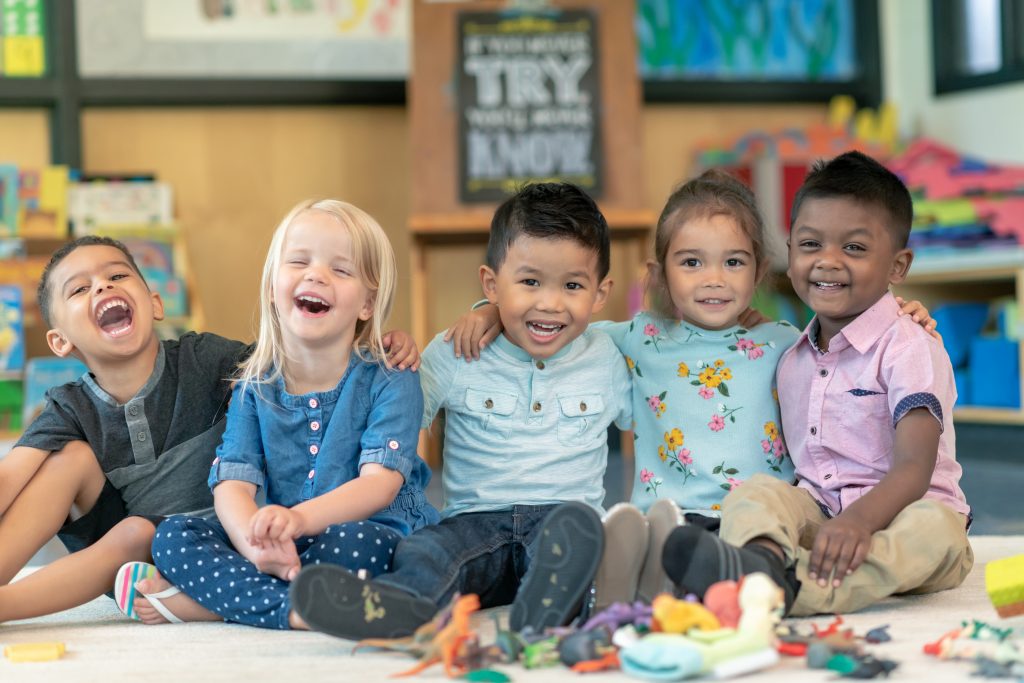
7. Communication and Updates
- What to Expect: Teachers often provide updates on how the day is progressing. This can include information about your child’s activities, interactions, and any notable moments.
- How to Navigate: Stay receptive to communication from teachers. This insight into your child’s day can be reassuring and helps build a partnership between parents and teachers.
8. Nap or Rest Time
- What to Expect: Depending on the preschool’s schedule, there may be a designated nap or rest time. Teachers will guide children through settling down for a brief period.
- How to Navigate: If your child is accustomed to napping at home, share any preferences or routines with teachers to ensure a smooth transition during rest time.
9. Pickup Time
- What to Expect: The first day typically concludes with parents picking up their children. Teachers may provide a summary of the day and share any highlights.
- How to Navigate: Be punctual for pickup and take the time to connect with teachers. Ask about your child’s experience, any notable moments, and gather any additional information or updates.
10. Emotions and Expectations
- What to Expect: It’s entirely normal for both parents and preschoolers to experience a range of emotions on the first day. Excitement, nervousness, and curiosity are all part of the journey.
- How to Navigate: Be patient and understanding with yourself and your child. Acknowledge the emotions, and celebrate the small victories of this significant day.
The first day of preschool marks the beginning of an exciting educational journey for your child. By knowing what to expect and actively participating in the transition, parents can help create a positive and supportive environment for their preschoolers.
Embrace the adventure, trust in the expertise of teachers, and savor the moments as your child takes their first steps into the world of learning and growth.
